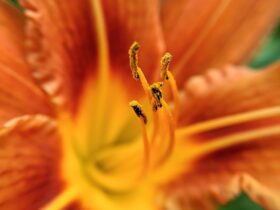A Friendly Guide to Getting Rid of Pokeweed in Your Garden
Do you have an unwanted guest in your garden that just won’t go away? Pokeweed, scientifically known as Phytolacca americana, is a perennial plant that can be a nuisance for gardeners. But fear not! With the right approach, you can effectively get rid of pokeweed and reclaim your garden space.
Surprising Statistics on Pokeweed
Did you know that a single pokeweed plant can produce up to 50,000 seeds in a single season? These seeds can remain viable in the soil for several years, making pokeweed a persistent problem in gardens and landscapes. Pokeweed is also toxic to humans and animals if ingested, adding another layer of concern for those trying to manage it.
But worry not! With the right strategies, you can effectively tackle pokeweed and create a thriving garden space.
Understanding Pokeweed
Before diving into eradication methods, it’s important to understand the plant itself. Pokeweed is a vigorous perennial plant with large leaves, reddish stems, and deep taproots. It thrives in open areas with full sun and fertile, moist soil. The plant can grow up to 10 feet tall, making it quite the presence in your garden.
Identifying Pokeweed
Pokeweed can be easily identified by its large, elliptical leaves, clusters of dark berries, and reddish stems. Young plants often have green stems that turn reddish as they mature, and the berries are a distinctive dark purple color. Properly identifying pokeweed is crucial to effectively managing it.
Safe Eradication Methods
When it comes to getting rid of pokeweed, it’s essential to choose methods that are safe for both you and the environment. Here are some effective strategies for eradicating pokeweed from your garden:
Hand Pulling
For small infestations, hand pulling can be an effective method. Ensure that you wear gloves to protect your skin from the plant’s toxins. It’s crucial to remove the entire root to prevent regrowth, so gently loosen the soil around the plant before pulling it out.
Mulching
Mulching can help smother pokeweed and prevent its seeds from germinating. Apply a thick layer of mulch around desirable plants to inhibit pokeweed growth. This method is best used in conjunction with other eradication techniques for maximum effectiveness.
Herbicides
In cases of severe infestation, selective herbicides may be necessary. Look for herbicides specifically designed for perennial broadleaf weeds, and always follow the application instructions carefully. Exercise caution when using herbicides, and consider seeking professional advice if you’re unsure.
Preventing Future Infestations
Once you’ve rid your garden of pokeweed, it’s essential to take steps to prevent its return. Here are some tips for keeping pokeweed at bay:
Regular Monitoring
Keep a close eye on your garden for any signs of pokeweed regrowth. Early intervention can prevent the plant from establishing itself again.
Improve Soil Health
Pokeweed thrives in fertile, moist soil. By improving soil drainage and reducing fertility, you can create an environment less conducive to pokeweed growth.
Plant Densely
Planting desirable native species in dense groupings can help shade out pokeweed and reduce its ability to establish itself in your garden.
How to Incorporate Pokeweed Management in Your Daily Life
Now that you have a good understanding of pokeweed and effective removal methods, it’s time to put this knowledge into action in your daily life. Here’s how you can incorporate pokeweed management into your gardening routine:
– Regular Inspections: Make it a habit to routinely inspect your garden for any signs of pokeweed intrusion. Early detection can make eradication much easier.
– Mulching Practice: When tending to your garden beds, make mulching a regular practice to inhibit pokeweed growth and promote the health of your desirable plants.
– Educating Others: Share your knowledge of pokeweed management with fellow gardeners and neighbors. By spreading awareness, you can collectively work towards minimizing the spread of pokeweed in your community.
Summary
In conclusion, while pokeweed can be a persistent challenge in gardens, it’s not something that can’t be effectively managed. By understanding the plant, employing safe eradication methods, and taking preventative measures, you can keep pokeweed at bay and create a flourishing garden space. Remember, persistence is key when dealing with pokeweed, so don’t be disheartened if it takes time to fully eradicate. With patience and proactive management, you can enjoy a pokeweed-free garden environment.













